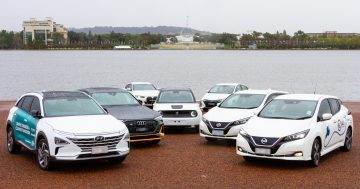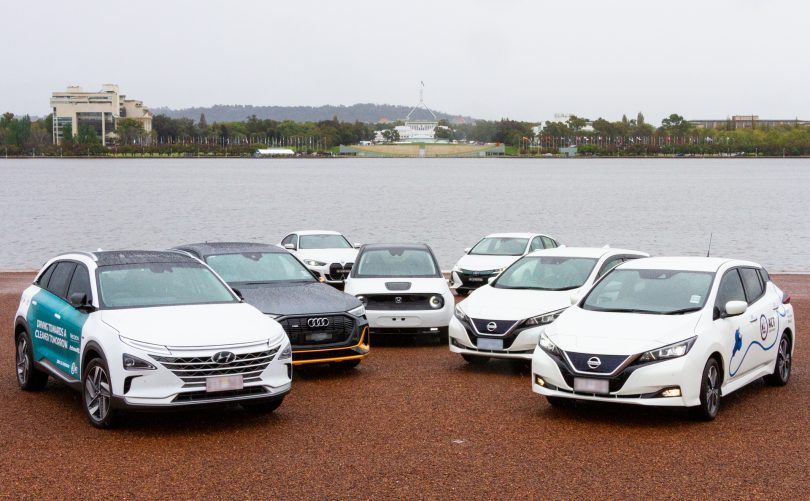
What do you call a group of EVs? A range. Photos: James Coleman.
Reports that the ACT Government may abolish the three per cent sales tax on used EVs have been met with one question from the sector: why isn’t it already in place?
Ion DNA sells used EVs imported from overseas. Owner Rob Ogilvie said he was charged stamp duty on two sales about eight weeks ago. At the time, he approached ACT Minister for Climate Change and Sustainability Shane Rattenbury about securing a stamp duty exemption for used electric vehicles and was told it was “imminent”.
“What that means, I don’t know, but it should be in the next few weeks.”
The ACT Government’s current range of incentives for EV ownership includes two years’ free registration, stamp duty exemptions, and zero-interest loans of up to $15,000 for purchasing EVs or EV charging infrastructure under the Sustainable Household Scheme.
Of these, only the stamp duty exemption stops short of extending to the used market. For one of Rob’s $40,000 Nissan Leaf models, it would mean a saving of $1200.
“Buyers don’t have to pay that if it was a new car. Why?”
Rob says some people are “touch and go” about whether or not they should buy an EV, and extending the tax exemption will “definitely make a difference”.
“Why are you giving discounts to the rich when you should be giving them to those who really need them?”
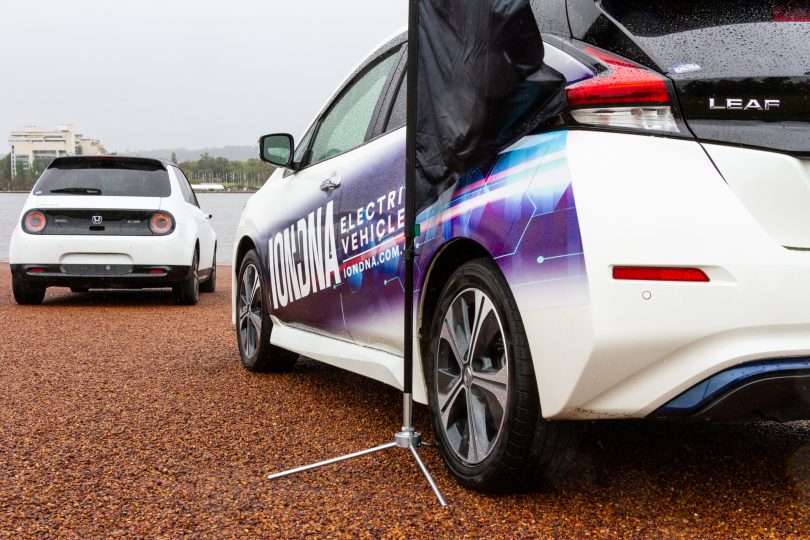
The Nissan Leaf and Honda-e, two EVs on offer at Ion DNA.
Speaking at the launch of the Australian Electric Vehicle Association (AEVA) national conference and expo planned for Canberra in August, Mr Rattenbury said more used EVs on the market could help to address current supply issues facing new EVs.
“Yes, we need more charging stations. Yes, we need to get more vehicles and more models on the market. We need the prices to come down, which will come with volume and scale, but if you just can’t get a vehicle, that is a problem.”
Mr Rattenbury said the combined effect of the incentives has put the ACT at the “forefront of the EV revolution”.
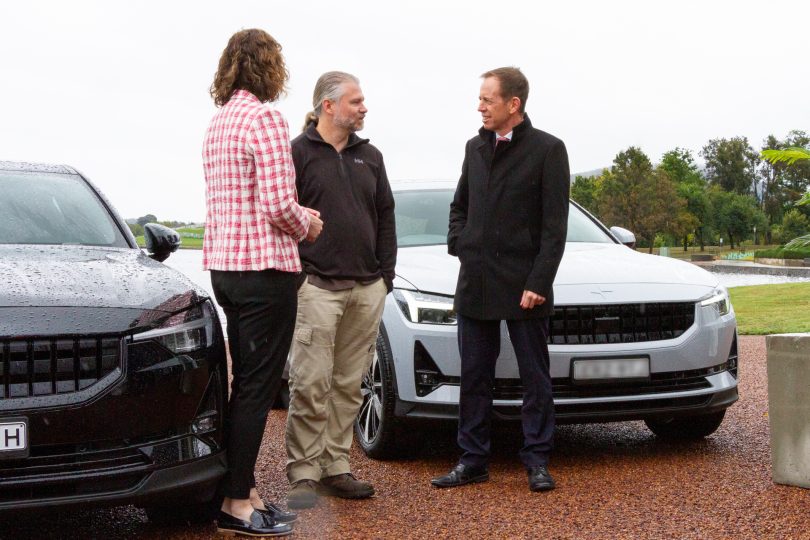
Member for Canberra Alicia Payne, AEVA president Chris Jones, and ACT Minister for Climate Change and Sustainability Shane Rattenbury.
In the last two years, from April 2020 to April 2022, the number of EVs on Canberra’s roads has increased almost four-fold to nearly 2000. Canberrans buy more EVs than anyone else in the nation on a per capita basis, with a 5 per cent market share compared to around 1.7 per cent nationally.
Mr Rattenbury said this makes the ACT the perfect place to host the upcoming EV exhibition at Exhibition Park in Canberra from 6 to 8 August this year.
The three-day event will offer members of the public a chance to get behind the wheel of EVs, both new and used, and have all their questions answered by experts in the industry. E-scooters, e-bikes, sustainable products, homewares and lifestyle initiatives will also feature.
AEVA President Chris Jones said the event is not only for those who already own an EV but also for those who are interested in learning more about all aspects of EV ownership.
“We’re dedicated to the transition away from fossil fuels. We think an informed public is the best tool we have for decarbonising transport. By helping to foster that public understanding of EVs, we can ensure the demand for EVs is purely organic.”
Mr Jones said subsidies are “well-proven methods for encouraging EV uptake”, but that right now, with EV manufacturers scrambling to keep on top of demand, this could also handicap the market with inflation.
“That’s why it’s really good to see stamp duty and registration relief because they don’t distort the market, and they do still make EVs that bit more affordable.”
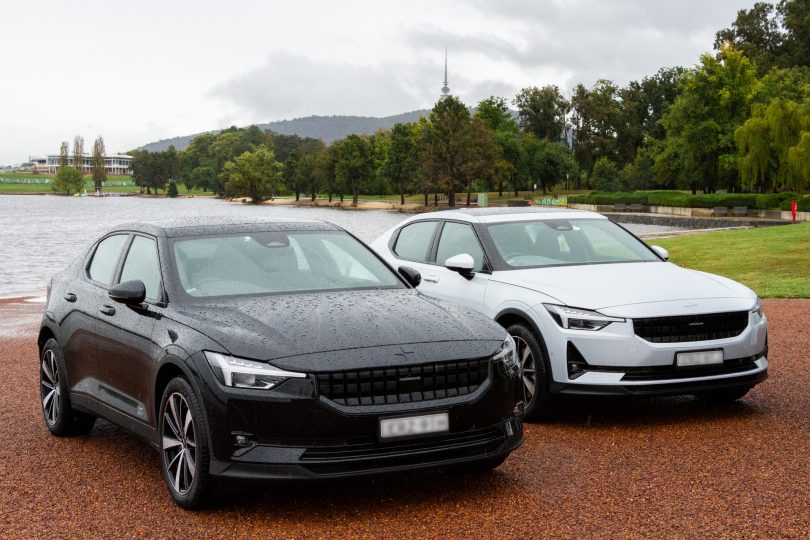
Polestar is one of the new brands to enter the Australian EV market.
Mr Jones said the increasing number of second-hand EVs makes them a compelling choice for low-income households, but admitted, “there are still lots of things that need to be done”.
“Where can we start? Well, you can come along to our event and learn about EVs from people who are in the know. We’re really keen to share our knowledge.”
Applications for exhibitors interested in showcasing their products to thousands of attendees are now being accepted on the AEVA website.
The conference runs from Friday, 5 August to Sunday, 6 August at the Coorong and Buddawang Pavilions, Exhibition Park in Canberra (EPIC). Tickets for the exhibition will launch in the coming months.
Region Media approached Mr Rattenbury’s office for comment.
